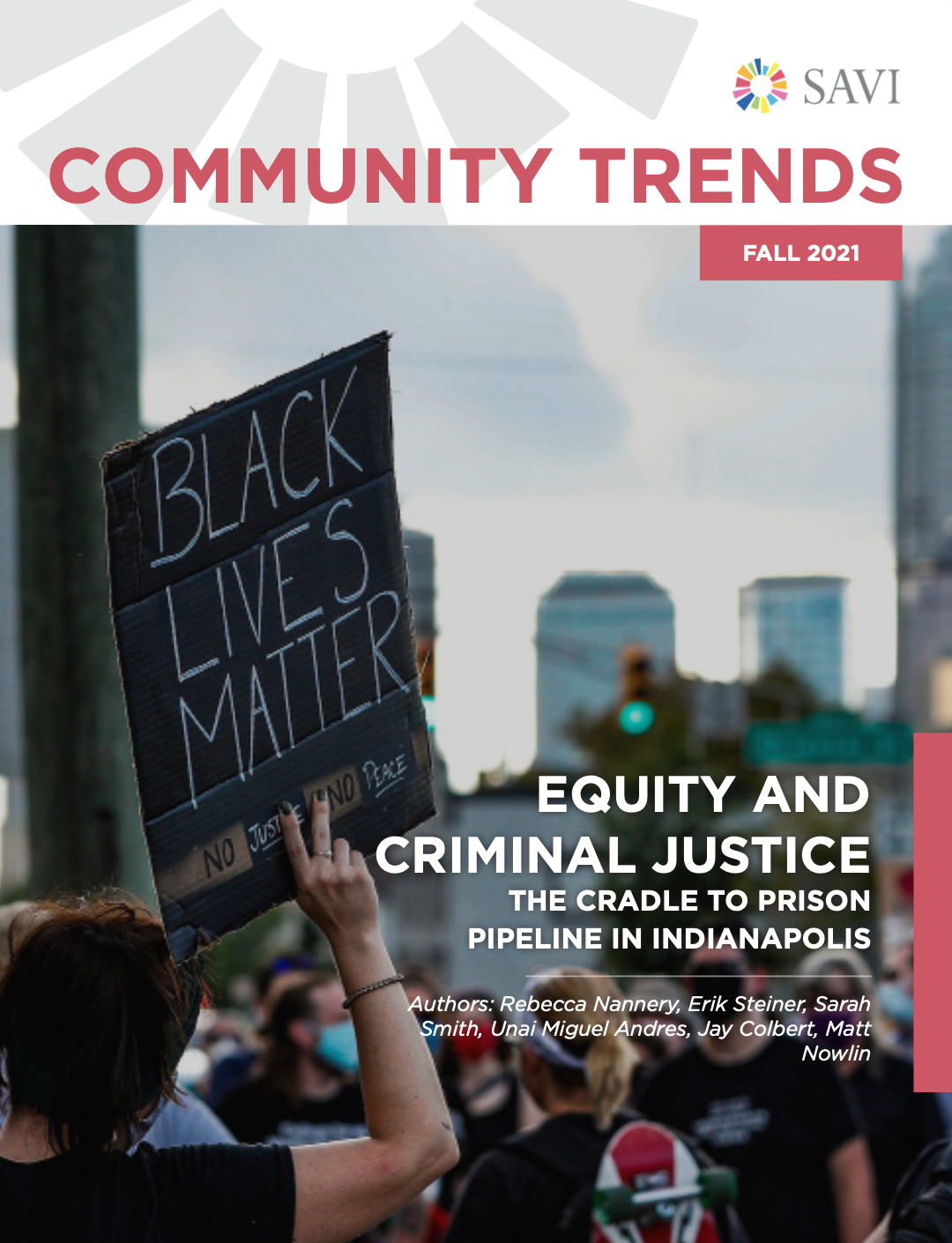Equity and Criminal Justice
SAVI Talks - November 18, 2021An individual’s interaction with the criminal justice system is not necessarily a random event: Research shows that beginning from birth, various factors including disability, race, gender, and economic status result in disproportionate impact on subpopulations in a way that makes them more likely to engage with the criminal justice system. These factors, and policies that alleviate or compound existing inequities will be examined using the Cradle to Prison Pipeline framework.
This report examines a concept called the “cradle to prison pipeline.” It is a review of some of the basic statistics at each stage of this pipeline: childhood, school, juvenile justice, early adulthood, and imprisonment. For each stage, we present basic trends and disparities across race, place, gender, and other demographic variables.
Research has shown that highlighting racial disparities can actually increase support for policies that perpetuate inequality, such as “stop and frisk.” With caution, this report maintains a focus on disparities, particularly between Black and white residents, because those are indicative of problems within systems and not the inherent criminality of individuals or populations.
Black and white jail population per 100,000 people age 15-64 (five-year average)
Indiana
Marion County
Community Trends Report
SAVI Talks Presentation
Introduction & Report Presentation:
Panel Discussion & Closing Remarks:
Articles and Story Maps
Explore other research and interactive content we have developed around equity.
Turnout, Absentee Ballots Up In Primary Election
Voter turnout was up 46 percent compared to the last midterm primary, a return to typical turnout levels. This year, more absentee ballots were cast than ever, making up of a fifth of all votes.
Changes in Indy’s Historic Black Neighborhoods
In the 1970s, 4,000 residents left this nearly all-black neighborhood. Why? An increasingly desegregated housing market and closure of one of the country’s first public housing projects.
Neighborhood Change 1970-2016
From 1970 to 2016, the forces of suburbanization and white flight, followed by the ensuing forces of urbanization, have significantly changed neighborhoods across the Indianapolis region. White, educated, and middle- to upper-income households left the core of...
Story Map: Moving Out – Suburbanization Since 1970
Indianapolis and Anderson were the region’s urban centers in 1970. Three-quarters of the population lived in those counties. Now, just over half the population live there, and Hamilton County is the second largest urban center.
Story Map: Race and Migration Since 1970
In 1970, half of the region’s Black population lived in 12 square miles north of downtown Indianapolis. As Black residents moved into ’60s suburban communities, 120,000 White residents left the city’s core for newer suburbs.
Are We Segregated by Educational Attainment?
Most neighborhoods match the educational diversity of our region, but those with less education are largely excluded from downtown and the northern suburbs, while they are relatively isolated in the southeast side and parts of Anderson.
2016 Population Growth in Indianapolis, Central Indiana
The region grew by 1 percent to 1.97 million residents in 2016 driven by 2 percent growth in suburban counties and growing Black, Asian, and Hispanic populations in Marion County.
Domestic Violence in Marion County
This report summarizes the state of domestic violence in Marion County in 2016, andpresents trends in the data between 2009 and 2016. It builds upon the 2013 feasibility study and 2014 update conducted by the Polis Center at IUPUI in partnership with the Domestic...
Reported Domestic Violence Victims Declining, but Most Cases Are Dropped or Dismissed
The number of domestic violence victims appears to be declining, but most cases are not reported and most reported cases have charges dropped or dismissed.
Local Industries Could Be Affected by Steel Tariffs
News of potential steel tariffs is particularly relevant to Indiana, where the manufacturing and shipment of steel plays a significant role in our economy. In June 2017, an estimated 40,732 Indiana workers were employed in primary metals manufacturing, which includes...
Authors
Sharon Kandris
Associate Director,
The Polis Center
Jay Colbert,
Data Manager,
The Polis Center
Jeramy Townsley,
Visiting Research Analyst,
The Polis Center
Matt Nowlin,
Research Analyst,
The Polis Center
Event Partners





